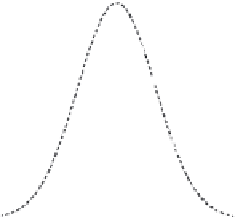Information Technology Reference
In-Depth Information
LSL
USL
-4.5
σ
+7.5
σ
-5.0
-2.5
0.0
2.5
5.0
7.5
FIGURE 7.13
Six Sigma capable process (long term).
as DMAIC, and if there is a need for a new process, then it is Design For Six Sigma
(DFSS). Both of these will be discussed in the following sections.
7.8
OVERVIEW OF SIX SIGMA IMPROVEMENT (DMAIC)
Applying Six Sigma methodology to improve an existing process or product follows
a five-phase process of:
Define: Define the opportunity and customer requirements
Measure: Ensure adequate measures, process stability, and initial capability
Analyze: Analyze the data and discover the critical inputs and other factors
Improve: Improve the process based on the new knowledge
Control: Implement adequate controls to sustain the gain
This five-phase process often is referred to as DMAIC, and each phase is described
briefly below.
7.8.1
Phase 1: Define
First we create the project definition that includes the problem/opportunity statement,
the objective of the project, the expected benefits, what items are in scope and what
items are out of scope, the team structure, and the project timeline. The scope will
include details such as resources, boundaries, customer segments, and timing.
The next step is to determine and define the customer requirements. Customers
can be both external consumers or internal stakeholders. At the end of this step you
should have a clear operational definition of the project metrics (called Big Y's,












































































































































































Search WWH ::

Custom Search